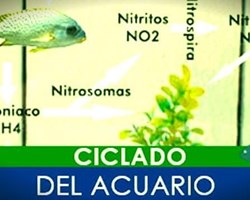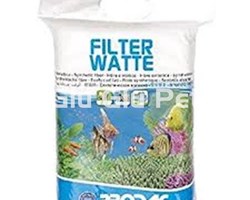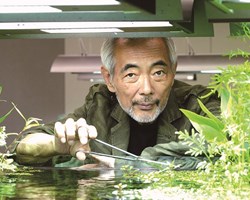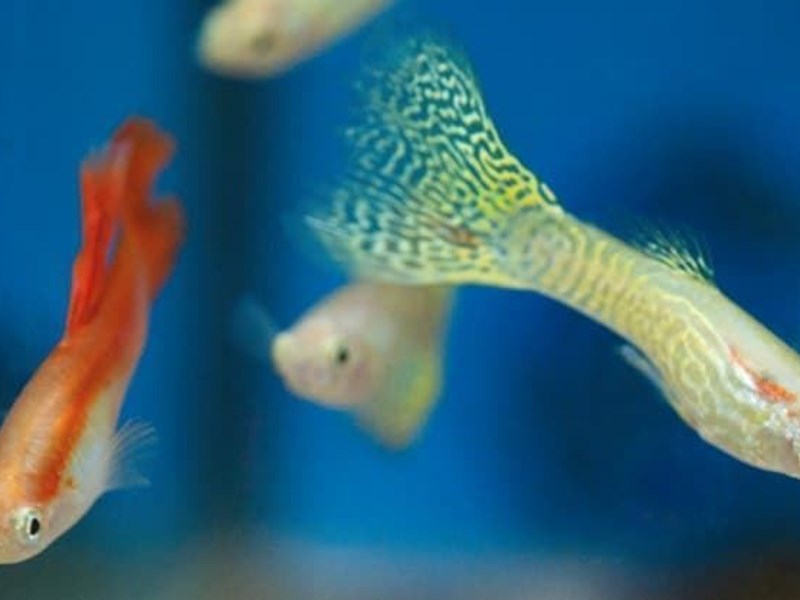
INDEX:
1.- WHAT IS AQUARIUM?
2.- AQUARIUMS FOR BEGINNERS: ALL ABOUT FISH TANKS.
3.- THE AQUARIUM.
3.1.- CHOOSE YOUR AQUARIUM.
3.2.- WHERE TO PLACE THE AQUARIUM?
3.3.- MEASURES OF THE AQUARIUM.
3.4.- HOW TO CALCULATE THE CAPACITY OF AN AQUARIUM?
3.5.- AQUARIUM KIT FOR BEGINNERS.
3.6.- TYPES OF AQUARIUMS FOR BEGINNERS.
4.- THE LOCATION OF YOUR AQUARIUM.
5.- SIZE OF YOUR FIRST AQUARIUM.
6.- FILTERING SYSTEM.
6.1.- TYPES OF FILTERING.
6.2.- TYPES OF FILTER.
6.3.- MAINTENANCE AND CLEANING OF THE FILTER.
7.- WHAT IS THE CYCLING PHASE?
8.- AERATION OF THE AQUARIUM FOR BEGINNERS.
9.- TEMPERATURE OF THE AQUARIUM.
9.1.- THE THERMOMETER.
10.- HEATERS AND THERMOSTATS.
10.1.- TYPES OF HEATERS.
11.- LIGHTING.
11.1.- TYPES OF LAMPS.
12.- SUBSTRATE.
13.- THE WATER.
13.1.- WATER CONDITIONING.
14.- AQUARIUM FOR BEGINNERS: FIRST STEPS.
15.- CHOOSE YOUR FISH.
16.- MAINTENANCE OF THE AQUARIUM FOR BEGINNERS.
1.- WHAT IS AQUARIUM?
Aquarium hobby is the breeding of fish and other aquatic organisms in controlled aquariums that recreate an artificial aquatic ecosystem through auxiliary technical systems.
This hobby allows you to bring a small part of aquatic nature into your home, but it goes far beyond the merely aesthetic or decorative.
You can talk about aquarium hobby as educational, creative, entertaining... there are even studies that claim that observing an aquarium reduces stress.
These therapeutic effects are already known to many people, but it also helps Alzheimer's patients.
In short, the aquarium world is to control aspects such as water, light, filtering... to maintain optimal conditions for your aquatic guests.
In this Aquarium Guide for Beginners in Glu Glu Pet we will explain the basics, everything about fish tanks that you need to know to start in this exotic world.
2.- AQUARIUMS FOR BEGINNERS: ALL ABOUT FISH TANKS.
The first thing we must tell you from Glu Glu Pet, what you must know is that it is an aquarium, its fish, its plants, are living beings and need your commitment, a maintenance agreement. Like with a dog or a garden, but easier, even.
But keep one thing in mind, you can only be a beginner, novice, inexperienced, dummie, apprentice, neophyte... for a limited time.
And that period is the most beautiful, in which any new experience and/or knowledge is most enjoyed.
Aquarium hobby will always allow you to continue learning and expanding knowledge, but it will be difficult for you to get excited like when you are a novice.
3.- THE AQUARIUM:
But healthy or living organisms will not last for a short time, if we do not add the necessary technical components to recreate a natural aquatic environment such as: light, filter, heater, etc., we will see everything.
First we are going to see the aquarium itself, the tank, the urn, and start at the beginning. The first decision you have to make is the place where you are going to place your fish tank, but first write down these tips:
3.1.- CHOOSE YOUR AQUARIUM:
If you have thought about having an aquarium in your home but you are not sure where exactly to start, we are going to give you some tips that will help you in your beginnings and will avoid some beginner mistakes; or, if you commit them, they will help you to face them in the best way.
Before you start with the aquarium, make sure you organize your time to take care of it well and do some research on the subject.
Aquarium fish come from different parts of the world, so they will have different behaviors and needs.
Once you know a little about keeping the fish you'd like to have, you'll be less likely to run into problems or deal with disease after you make your first purchase.
This blog is a good source of information to know some basic things like water parameters, temperature, behaviors, compatibility, or adult sizes. These are some of the essential factors to consider.
In general, the wisest thing to do in an aquarium is to limit the species selected; one or two is ideal.
Most first-time hobbyists tend to overcrowd their tank and put the fish in the tank from the first day they arrive at your home.
Never do that : fish are living beings, not inanimate objects. You have to acclimatize them and give them the necessary space. Keep in mind that some will live for many years and deserve good treatment and accommodation in the best conditions.
Your first aquarium will have a better chance of success if you select common and inexpensive fish and plant species.
With equipment and accessories, however, it's best to choose good brands from the start.
Once you get a little experience, you can try it with more difficult and expensive species.
When choosing your first aquarium, remember that larger ones are easier to balance and maintain than smaller ones.
This is because a smaller volume contaminates much faster than a larger one.
Eighty liters is a good size to start with for most juvenile freshwater species.
A twenty-liter aquarium, for example, is adequate for a male betta and a couple of snails.
When we don't have a set idea of the aquarium we want, the wide selection of aquariums available in stores can be overwhelming.
However, choosing our first aquarium is easier than you think. The ideal thing is that, before buying it, you do a little research and inform yourself about the requirements of space, habitat and specific care, among others, that the fish that you are interested in keeping will need, at Glu Glu Pet we advise you on which one is going to be be the best aquarium you can buy for your first time you get into this fascinating world of aquarium hobby.
3.2.- WHERE TO PLACE THE AQUARIUM?
These are the basic tips that we give at Glu Glu Pet to color your aquarium in the best possible way so that it lasts as long as possible:
- Do not place it near a window, because it will affect the temperature, favor the proliferation of algae and disrupt the hours of light.
- Avoid the proximity of air conditioning and heating, since sudden changes in temperature can harm the fish in the aquarium for beginners.
- It must be accessible for maintenance and have a plug for electrical devices nearby.
- You have to decide the place before installing it, because the space will determine the size of the tank, which will be the next decision you will have to make.
3.3.- AQUARIUM MEASURES:
The next decision is the size of the deposit.
You have beginner aquariums in all shapes and sizes, from 30l nano aquariums , like the one you see here, to multi-thousand liter custom built tanks.
If you want to see a sample of the aquariums on offer at Glu Glu Pet, we show you some of the ones we have, but we can request more or even custom-made aquariums of several thousand liters:
- HAGEN NANO AQUARIUM FLUVAL FLORA 30L .
- BLAU KIT CUBIC 42.
- 100L AQUALED AQUARIUM KIT WITH OPTIMUS FILTER (ICA).
- 25L BLACK ICA AQUARIUM KIT.
- AQUALED 68 PRO AQUARIUM KIT (ICA).
- BLAU 28L AQUARIUM KIT
- KIT AQUA LED 45 PRO(ICA).
What you have to keep in mind is that the size of your tank will affect the characteristics of the rest of the necessary equipment.
For example, a 200L tank requires a larger filter than a 60L one.
Although it may seem contradictory, a large beginner aquarium is easier to maintain than a small one.
The more surface area a tank has, the smoother the mismatches, and the easier it is to maintain.
A small urn is cheaper and easier to locate, but it is a mistake to think that it is easier.
The aquarium for beginners should not be below 80 liters.
The bigger an aquarium is, the more margin for error you have, and you can expand it step by step.
At Glu Glu Pet we advise you to:
- Aquarium height: be about 40-50 cm. You will facilitate maintenance and lighting.
- Width: I advise you to be between 35-50 cm.
- Length: The physical space and your budget will condition the length.
3.4.- HOW TO CALCULATE THE CAPACITY OF AN AQUARIUM?
Use this simple formula to calculate the volume of a tank:
Height x Width x Length (cm) / 1,000 = X Liters
For example, if we have a tank that is 60 cm high x 40 cm wide x 50 cm long.
Regarding the price of the urn, it is evident that it depends on its size.
For a quick reference, in this link you have a 100 liter tank for less than €150 in Glu Glu Pet.
However, the most common among those who start is to buy a complete aquarium kit, with all the necessary equipment to start in the fastest and easiest way. Below you can see some beginner aquarium kits that you can buy at Glu Glu Pet.
3.5.- AQUARIUM KIT FOR BEGINNERS:
Buying a beginner aquarium kit is the easiest way to get started without having to go through the hassle of buying each item in the kit separately.
These simple aquariums are a perfect option to enter the aquarium hobby for beginners without having to make a large investment.
Below you have a small sample of the complete fish tank kits that you can buy at Glu Glu Pet:
- BLAU KIT CUBIC 42.
- 100L AQUARIUM KIT. AQUALED WITH OPTIMUS FILTER (ICA).
- 25L BLACK ICA AQUARIUM KIT.
- AQUALED 68 PRO AQUARIUM KIT (ICA).
- BLAU 28L AQUARIUM KIT.
- KIT AQUA LED 45 PRO(ICA).
Purchasing a complete aquarium kit like Fluval Accent takes all the guesswork out of it. Basically, all you have to do is choose the size and color of the aquarium and the cabinet. Most kits include all the accessories you need to be successful with your first aquarium.
3.6.- TYPES OF AQUARIUMS FOR BEGINNERS:
In order not to get too complicated with the different types of aquariums, we are going to see the most common fish tanks:
- COLD WATER FISH TANK: Experts recommend this type of aquarium for beginners, because it is the easiest to maintain. You have many options of fish that can inhabit this type of aquarium for beginners. They require a stable temperature of around 18º-20ºC, a filtering system and water oxygenation.
- TROPICAL AQUARIUM: Perhaps the most classic type of aquarium, the Tropical Aquarium maintains a warm water temperature, between 24º-28º C. You have many species to choose from, just like aquarium plants, but be careful not to overpopulate your aquarium, it is a Typical rookie mistake.
- PLANTED AQUARIUM: Also called "Dutch Aquarium", its main protagonist is the cultivation of aquatic plants, even dispensing with the presence of fish.
You have to decide the type of ecosystem you want to recreate in your fish tank based on the difficulty of maintenance, and the type of species you want in your aquatic microworld.
4.- THE LOCATION OF YOUR AQUARIUM:
The best place to locate your aquarium is an area where it "comes to life" and is seen often, you will want to show it off and find out quickly if something has happened in it.
For convenience, put it near a plug and to maintain the parameters it is better to keep it away from drafts and stoves.
It is important that it is well lit so that the plants carry out photosynthesis and release CO2, but try not to give it direct light, so that the sun's rays do not affect the final temperature of the water.
Other considerations regarding the placement of the aquarium:
- Make sure there is enough space around the aquarium for easy access during cleaning and maintenance.
- Do not obstruct access to the equipment, or to areas you need to access frequently, such as the back of the aquarium (to access the filter) and the top (to feed the fish, change the water and check the lighting).
- There should be outlets close enough to the aquarium so you can plug it in without using an extension cord. These are not only a tripping hazard, but also an electrical hazard.
- If possible, place the aquarium relatively close to a faucet or sink to facilitate both water changes and any type of maintenance.
- Avoid placing the aquarium near radiators, air conditioners, doors or windows, as these can alter the ambient temperature around it. Keeping the aquarium temperature stable is crucial to ensure the good health of our fish. Therefore, try to keep it away from these places.
- Keep the aquarium out of direct sunlight. In addition to increasing the temperature, it can cause an excessive growth of algae.
- Place the aquarium on a stable, level surface. As we have mentioned before, the aquarium will weigh at least 1.2 kg per litre, so a stable surface is more than necessary. If in doubt, consult a professional to ensure that the furniture or surface is capable of supporting the weight of the aquarium. Also, try to place the aquarium on a flat, level surface. This will ensure that the water is level as well and help prevent excessive pressure in the tank.
5.- SIZE OF YOUR FIRST AQUARIUM:
There is a tendency before the decision of the first aquarium, that the smaller the more difficult to maintain. Generally, the larger the aquarium, the better it will be for your fish:
- First of all, you will have more space to include a greater diversity of fish, plants and decoration.
- Second, and more importantly, a larger volume of water helps keep parameters more stable (like temperature, for example) and dilute toxic nitrogen residues (ammonia and nitrite) that can build up over time.
- Another advantage of opting for a large aquarium is that, in this way, the fish are not stressed by living in a crowded place. We recommend a minimum of 80 liters or that you calculate 1 cm of fish per liter of water as a general rule.
6.- FILTERING SYSTEM:
It is essential to have a healthy aquarium to clean the water of impurities and purify it biologically.
In a beginner aquarium, as in nature, the biological cycle of living things produces different waste.
In the natural environment, these wastes are easily diluted, but in a tank they accumulate until they reach toxic levels.
For this reason, it is necessary to have a system that filters the water and retains solid waste particles. Also, aquarium filters should harbor a colony of beneficial bacteria that remove toxic waste.
A filtration system that purifies the aquarium water 3-4 times an hour, and removes biological debris before it becomes dangerous, is a must.
This point is vital, and I recommend that your filtering system "go beyond" and have a capacity of liters / hour higher than what your tank needs. In other words, if you have a 100-litre tank, then you need a system that filters between 300-400 liters/hour as a minimum.
6.1.- TYPES OF FILTERING:
The RAE dictionary has the following definition for the term Filter: Porous material, such as felt, paper, sponge, coal, stone, etc., or mass of sand or small stones, through which it passes a liquid to clarify it from the materials it carries in suspension.
In Glu Glu Pet you will find several types of filters that we will see later, and different filter materials.
But first you must know the three kinds of filtering that the water of a beginner aquarium needs:
- Mechanical: This filter cleans the water of solid impurities by retaining them physically. Sponges, gravel or perlon are used. They require regular cleaning to reduce nitrate buildup and promote aquarium stability.
- Chemical: This type of filter alters certain chemical parameters of the water depending on the material used. These types of filters are not generic and are used according to the specific needs of the water. For example, when we want to get rid of drug residues in the water, we put activated carbon. Resins and peats are also used in the aquarium for beginners.
- Biological: Some strains of beneficial bacteria that are located in the filter materials purify the water thanks to the nitrification cycle. Bacteria spread over the entire surface of the filter, so it is best to use highly porous materials that offer more surface area. The important thing is to know that these bacteria transform ammonia into nitrites, then nitrites into nitrates, and the latter disappear with regular water changes.
6.2.- TYPES OF FILTER:
Deciding which filter is the right one for your aquarium is not easy, especially when you are a beginner.
Depending on the situation of the filtration system we can distinguish the following types:
- Internal: InternalFilters for Aquarium. The internal aquarium filter , also called "submersible", is the filtering system that is placed inside the tank, taking up valuable space. It is typical of the small beginner aquarium. The water enters through the base, and after passing through the filter material, it is returned to the tank through the upper part. They generally only use mechanical filtration, but we can add biological material to increase their performance.
- Cascade or backpack :Cascade Filters for Marine Aquarium. This system hangs from the tank on the outside, and usually offers more space for filter material than the internal filter. The cascade filter has greater efficiency and avoids the loss of space inside the aquarium, but aesthetically it is still visible. It is normally used in the medium beginner aquarium, and its maintenance is usually much easier than the internal filter.
- External : External Filters It is the best and most efficient, it is totally external, and has a larger container for the filter material. The water is introduced through a tube, which passes through the bottom-up filters and a pump returns it to the urn.
6.3.- MAINTENANCE AND CLEANING OF THE FILTER:
It is necessary that you clean the filtering materials from time to time, because little by little they will become saturated.
How often to clean your own tank will tell you, but as a guide, once a week or 15 days.
But this cleaning can NOT be done with tap water, as it would destroy the biological filter.
If you use tap water as is, the chlorine would kill the entire colony of friendly nitrifying bacteria.
To clean the filtering materials you should ALWAYS use the water from the aquarium itself.
Normally, the one that is withdrawn is used in the partial changes that are part of the periodic maintenance.
- The mechanical filter: you can clean it every time you do the partial water change, eliminating all possible residue.
- The biological filter: you have to clean it when it is saturated, and do it gently to keep most of the bacteria.
- Chemical filters: they must be changed every so often indicated by the manufacturer.
Oxygenation of the fish tank. Aquatic organisms, animals or plants, also need oxygen dissolved in water for their vital functions.
7.- WHAT IS THE CYCLING PHASE?
Now let's see what the cycling phase is, essential before introducing fish.
It is the period of settlement and acclimatization of the bacterial colony in the aquarium and the filter.
Aquarium Cycling is a tough test for every beginner in the aquarium hobby. A difficult exercise in patience for these days when life goes by so fast.
Many are surprised when they find out that once the tank is assembled and working, we must let it mature.
It is known as the aquarium cycle, and it is the time that the bacteria need to colonize the urn and be able to take care of the biological waste.
Without cycling, the fish would die in the beginner aquarium, due to the high levels of ammonia and nitrites.
This maturation period usually requires 30 to 60 days. Yes, you read correctly, up to 60 days.
An aquarium is cycled when it has zero ammonia and nitrite levels, and the nitrate level begins to rise.
It is advisable to maintain the level of nitrates between 5-15 mg/l. To control it, carry out regular water changes and prevent it from exceeding 30 mg/l.
For bacteria to colonize the aquarium they need food, that is, ammonia, and there are three ways to provide it:
- Fish food: Adding a few flakes each day, which when decomposed becomes food for bacteria.
- Adding Ammonia: Ammonia can be added to the aquarium chemically, but it requires a thorough control of the aquarium water parameters for beginners.
- Resistant fish: Add fish capable of withstanding high levels of ammonia. Many of us consider him little friend of animals.
But at GLU GLU PET we recommend that you add purchased live bacteria as it is safer and in this way you prevent the aquarium from being contaminated with excess food.
There are also accelerator products for this process, which neutralize certain substances and favor the growth of the beneficial bacterial colony.
As a beginner that you are, take advantage of this time to delve deeper into this art of aquarium hobby, and broaden your knowledge.
8.- AERATION OF THE AQUARIUM FOR BEGINNERS:
In nature, the extensive surface of the water and its movement provides the necessary oxygen for aquatic beings.
But in an aquarium the surface of the water is very limited and it is necessary to promote oxygenation:
- Aerators and Oxygenators for Fish Tanks: The easiest way to increase oxygen levels is to agitate the surface, but without stressing the fish. To do this, an air pump called an aerator connected to one or more diffusers is used. Many people mistakenly believe that it is the bubbles in the aerator that supply the oxygen. But in reality it is the movement on the surface generated by the bubbles that supplies the oxygen to the water. In recent times, the aerator pump is being replaced by modern filters, as they are much more efficient. Very rapid gill movements, and fish gasping at the surface indicate a possible lack of oxygen in the tank. The aeration function, in addition to providing oxygen to the aquarium for beginners, ensures thermal stability, since it shakes the hot and cold layers.
- Oxygen and Temperature in the tank: There is a close relationship between the temperature of the water and its oxygen concentration. The lower the temperature, the more oxygen. Relationship between water temperature and oxygen concentration in the aquarium. Available Oxygen Minimum Acceptable Oxygen:
- 10ºC
11.3 mg/l [od]
08.8 mg/l [oma] - 20ºC
- 9.2 mg/l [od]
7.8 mg/l [oma] - 25ºC
8.2 mg/l [od]
7.5 mg/l [oma] - 30ºC
7.5 mg/l [od]
6.9 mg/l [oma]
Temperature – C. / Oxygen concentration – mg/l
od / oma
- 10ºC
Although most fish could accept a minimum oxygen concentration of 4-5 mg/l, it is recommended that in beginner aquariums it should never be lower than 7-8 mg/l.
9.- AQUARIUM TEMPERATURE:
We must maintain a constant water temperature appropriate to the type of aquarium and the chosen species.
Another determining factor in the tank is temperature, and in this aquarium manual for beginners we cannot skip it.
Whether it is a hot or cold water fish tank, the aquatic environment must have a thermal stability that you must recreate. It is important for the health of the fish to avoid sudden changes in temperature.
The question is not to keep it at an exact temperature but to maintain a stable temperature in the tank within the range required by the chosen fish.
Keep these two points in mind:
- The temperature of your aquarium is totally influenced by the climate of your area and/or room.
- Cooling water is much more complicated and expensive than heating it.
Different species of fish have different preferred temperature ranges.
Some adapt to a wide range, while others need very specific temperatures.
Thermal control equipment in a fish tank consists of the thermometer, and heaters/coolers governed by one or more thermostats.
The thermal equipment is not totally essential in any aquarium for beginners, but I advise you to use it to maintain a stable temperature.
9.1.- THE THERMOMETER:
You need to monitor the temperature, and for this there are thermometers.
You have these types of thermometers for your aquarium:
- Glass: The classic thermometer commonly known as "Mercury thermometer", is actually tinted alcohol. It is placed inside and they are quite accurate.
- Sticker: It is an adhesive sticker that is placed on the outside and is very unreliable. I do not recommend it because they are very inaccurate.
- Digital Thermometer: They are the best, as they are the most accurate. You have a wide variety to choose from, with multiple functionalities such as maximum and minimum, internal and external reading... I recommend that you choose one with the submersible probe.
10.- HEATERS AND THERMOSTATS:
To maintain the right temperature, the most widely used system is the use of a submersible resistance activated by one or more thermostats, also called a heater or thermo-heater.
It is important that you place the heater far from the thermostat, and in a place where there is good water circulation, to distribute the heat in the best way and maintain a homogeneous temperature throughout the aquarium.
As for the power of the aquarium heater, it mainly depends on the difference in temperature between the aquarium for beginners and the room.
Keep in mind that the filtering and lighting system add heat.
NEVER connect the heater outside the water, because it heats up very quickly, you can burn yourself and damage the device.
As a general rule, you can assume that the tank has as many Watts as liters, that is, a 100-liter aquarium – a 100-watt heater.
If we choose a heater that is too small, it would always be working, shortening its useful life and increasing the electricity bill.
If we choose one that is too large, it could heat the water too quickly, harming the fish.
In the case of discovering some type of imbalance in the temperature of the aquarium, when correcting the deviation, do not cause sudden changes, and do it gradually.
10.1.- TYPES OF HEATERS:
In heating systems for aquariums we find these 3 types:
- Internal : The most used heater, it is placed inside the water, and it is basically a resistance inside a glass tube with a thermostat. NEVER light them out of the water.
- External : It is more modern and effective, and also does not take up space inside the tank because it is connected to the external filter outlet hose.
- Bottom : We have the heating mat, which is usually placed under the tank, and the heating cable, which is placed inside, under the substrate. This type of heaters notably favors the development of plants.
11.- LIGHTING:
Lighting is important as it is the source of vital energy for the plants that live in the aquarium.
Natural light is difficult to control, so it is better to use an artificial lighting system that provides the necessary lighting conditions.
It is fundamental in the aquarium, and we must choose well to recreate the necessary light, without excesses or defects.
Too much light will waste money and more algae in the water. Low light will stunt plant growth.
Beginner fish-only aquariums are as simple as lighting, needing only to look good.
But natural plants require a light of greater quantity and quality.
It is essential that you maintain a regularity in lighting, providing stable periods of 8-12 hours of light. The simplest thing is usually to use a timer.
It is essential to maintain a time regularity between periods of light and periods of darkness for the stability of the ecosystem.
To know what light flux your aquarium needs, you must take into account the light requirements of your plants and fish, and the height of the water column.
Light-Liter Ratio
This calculation is complicated, so as a general rule you can take the following traditional reference with fluorescent lighting:
- 4 liters / 1 Watt – Basic lighting.
- 3 liters / 1 Watt – Intermediate lighting.
- 2 liters / 1 Watt – Strong lighting.
Also as a guide:
- 1W/3l is sufficient for freshwater aquariums.
- A marine asks for 1W/2l.
Watts per Liter have traditionally been used as a reference in lighting. But it is better to use the Lumen (Lm) because it is more appropriate.
Lumens refer to the amount of light emitted, while Watts refer to power.
For example, a cheap 100W device can give less Lumens (quantity) than a quality 60W device.
For this reason I am also going to give you an indicative reference in Lumens, which is more appropriate:
- 20-25 Lm/l – Basic lighting for urns without plants.
- 25-35 Lm/l – Intermediate lighting for fish and plant aquariums.
- +35 Lm/l – Strong lighting for planted aquariums.
- 50 Lm/l – Lighting for marine aquariums.
- 50-70 Lm/l – Lighting for marine reef aquariums.
After a few months of operation, the development of aquatic plants and the color of the algae will tell you if the lighting in your beginner aquarium is correct:
- Brown in the color of algae on sand or crystals indicates weak or poor quality lighting.
- Green algae mean correct lighting.
- The blue color in algae indicates excess light intensity.
Traditionally, fluorescent tubes have been used to illuminate aquariums, due to the variety of assortment, and greater performance and duration.
But in recent times, new technologies such as PL lamps, HQI lamps, low consumption lamps, and especially Led lamps have come into play.
11.1.- TYPES OF LAMPS:
Today you have several options to light your aquarium for beginners. Below in Glu Glu Pet we present several types of lamps: See Lamps:
- T8 Fluorescent: They are the most common and usual of the kits, but they are not the most recommended, because they are not very efficient.
- T5 Fluorescent: They are more modern and efficient, they give better light and take up less space. They achieve greater penetration in the water column.
- PL Fluorescent: They provide more light in less space. The heat it gives off is its main drawback.
- Low consumption lamps: Similar to the PL lamp, it has in its favor that it has an integrated ballast, but it does not reach much depth.
- Led: The latest technology offers quality, power, reduced consumption and greater aesthetic appeal. Its main drawback is higher cost.
- HQI Lamps: Metal Halide lamps are used for large aquariums, where fluorescent lamps fall short.
12.- SUBSTRATE:
The "floor" of the aquarium is composed of gravel or sand, and if necessary, a substrate with nutrients for plants or shrimp.
Depending on the tank you set up, you will need a thick layer of substrate for plant roots, or a thin layer for some African cichlids.
Always wash the gravel, you will avoid cloudy water for days, and unnecessary work on the filter.
I recommend you to put the substrate forming a small slope from back to front, to facilitate cleaning and give greater depth.
13.- THE WATER:
Water is the fundamental pillar on which the small world created in an aquarium for beginners is supported, and in order to maintain it successfully, you must control certain water parameters.
Water is a complex element, and you have to learn a couple of basic things for the success of your aquarium:
- It is common to think that the water from the supply network is suitable for fish, but it is NOT. Care must be taken since this water contains substances such as Chlorine or Chloramine, which are very toxic to fish, plants and bacteria. beneficial. For this you have to let it sit for several days from the tap or use a product that ends with chlorine. You also have to control the basic parameters, which you will now see, before using that water in the fish tank for beginners.
- You have to keep in mind that different species of fish require different water qualities. For example, freshwater fish ask for soft and acidic water, while marine fish need a salt supplement.
Regarding the basic parameters, you must know them to control them, and thus maintain the necessary conditions for your aquatic friends.
To fill the aquarium use only cold water, never hot, as it contains too many toxic ions. Let the water run out of the tap for a few minutes before filling the tank or container, particularly in the morning.
13.1.- WATER CONDITIONING:
Pay attention to this step as it is vital for the fish to live in good conditions.
Treat the water with anti- chlorine and conditioners.
Run the new system for several days, preferably more than 15 days, making any necessary adjustments to heating, lighting, and filtration before introducing fish.
Basic parameters of water. We are going to see the 3 parameters that any beginner to the aquarium hobby should know. Don't be scared, they are just a few simple explanations:
- pH: The pH is the parameter that indicates if the water is acidic, neutral or alkaline. It is measured on a scale from 0 to 14:
- Acidic: From 0 to 6 we have acidic water, being more acidic the closer it gets to zero.
- Neutral: 7 on the pH scale indicates neutral water.
- Alkaline: Above 7 the water is alkaline, being more alkaline the higher you go on the scale.
Appropriate pH values depend on the species inhabiting the aquarium for beginners.
- gH: Hardness or gH refers to the “amount of salts” in the water. The scale that covers from 0 to 20, is measured in odH, and in general we can find:
- Soft: Below 8 odH.
- Semi-soft-semi-hard: Between 8-12 odH.
- Hard: Above 12 odH.
- Kh: The parameter Kh indicates the temporary hardness of the water. If the value drops below 4odKH, the pH of the starter tank becomes more unstable. Above 4odKH the pH remains stable.
There are also other parameters that must be controlled in beginner aquariums because they are toxic.
These are derivatives of the biological process of fish and plants, and the decomposition of organic matter.
I'm talking about Ammonia, Nitrites and Nitrates.
To keep these harmful elements under control we need the filtering system: it is the Water Analysis.
Obviously the chemistry of water is much more complex, but for now you don't need to know more. Do not feel overwhelmed, because we all learn little by little.
For the analysis and control of the different water parameters there are different devices, more or less sophisticated. From test strips to precise and expensive digital meters. But the most practical solution for beginners is usually to get a multi-test for €30-50.
Regularly check the PH, KH, GH, ammonia, nitrites and nitrates to see if they are at the right levels.
Approximately every 10-15 days a partial renewal of the water is carried out, a change of approximately 20% of the total volume. Over time you will get to know better which is the water renewal pattern that works best in your aquarium.
14.- AQUARIUM FOR BEGINNERS: FIRST STEPS.
Now that you have assimilated the basic concepts of aquarium hobby, it's time to put everything together to start recreating your little aquatic microworld.
When you have decided on the size of the tank, where to place it, all the necessary equipment and the fish and plants to start with, you should know how to start an aquarium to start this fantastic journey.
In this Aquarium Guide for Beginners, at Glu Glu Pet we give you the guidelines to start your aquarium.
Let's see in 6 easy steps how to start an aquarium:
- Install the tank: Place the aquarium on a sturdy and perfectly level furniture -support. I recommend putting a polystyrene sheet between the cabinet and the tank to compensate for possible irregularities in the support and protect the bottom glass.
- Check the tightness : Check for leaks. Fill the tank and wait at least 24 hours to check that there are no leaks in the tank. This simple test can prevent you from a real disaster. Imagine for a moment that after you have everything set up you realize that your beginner aquarium is leaking.
- Pour the gravel and place the decoration: First clean the gravel well with tap water before adding it. I recommend that when laying the substrate, the back of the tank is about 8-10 cm thick, while the front is 5-7 cm. This gives a sense of depth, and will help you when placing the plants. Then place the decoration you have decided on, leaving the necessary spaces for the plants.
- Place the equipment and adjust the parameters.
- It is time to place the heater and the filtering system. It is important that the filter takes in the water near the bottom on one side, and expels it on the opposite side at the top, to create a current that circulates throughout the aquarium for beginners. Use a plate or glass in the bottom so you don't stir up the gravel when you pour in the liquid.
- Place the thermometer and let stand 24 hours. The next day, connect the filter and heater, and adjust the temperature over the next few days. Every day, make a couple of food flakes so that when they decompose, they serve as food for the bacteria.
- Place the plants: After a few days you can place your plants, I advise you to put the less demanding species. First, clean them with warm water and remove dead leaves and roots. Another little tip, put the plants that grow the most in the back and the ones that grow the least in the front of the tank.
- Turn on the lighting with a daily period of 10-12.
When you already have the stage prepared, it is time to wait for the aquarium to "mature" and stabilize the biological balance, before introducing the fish, respect the cycle of a minimum of 15 days and a maximum of 60 days for a perfect cycle of the aquarium.
15.- CHOOSE YOUR FISH:
It is essential that the species you choose are compatible with the parameters of your aquarium, also taking into account the liters of water that each fish needs, if they are solitary... Tetra Imperador in an Aquarium for beginners
Make sure that the species you choose are compatible with each other, and that some do not end up serving as food for others.
Keep in mind that there are different levels where the fish live, there are bottom fish, surface fish and medium height fish.
If you want more information about fish you can visit us at Glu Glu Pet and we advise you the best fish for your aquarium.
Now let's see the fish species recommended for beginners as they are the most resistant and easy to maintain:
- The Cyprinidae family ; which are school fish, that is, they live in groups, we can start with Barbels, Chinese Neons, Rasboras or Danios .
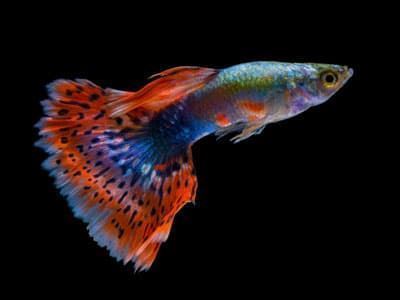
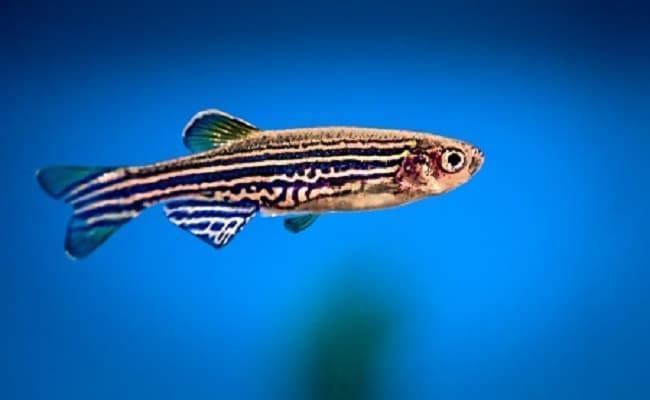
- Also the family of the Coridoras or the Rainbow Fish: they are good types of aquarium fish for beginners.
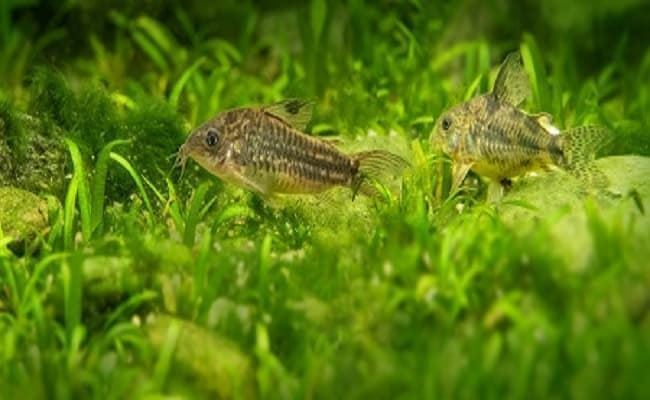
Now let's see more variety of fish, appropriate for beginner aquariums, but these are second level, which need more care than the previous ones:
- We can choose between Guppies, Platys, Swordtails, Loaches, the famous Bettas, or Tetras...
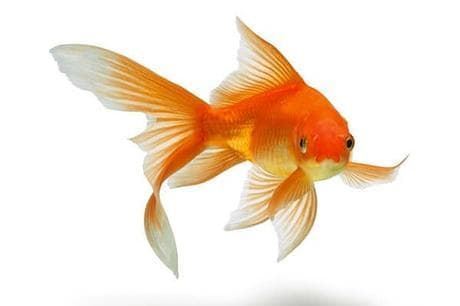
There is a long list of aquarium fish for beginners, but don't get too bogged down, start small and learn the needs of each fish before you buy.
This Aquarium Manual for Beginners cannot end without these little tips for when you buy your fish:
- Control the color of the water : Generally, the aquarium water should be transparent, so if we detect any coloration, it may mean that the fish have some type of medical treatment, so it is not highly recommended.
- Look at the reaction of the fish: Bring your hand closer to the aquarium as if you were going to feed them, if the fish do not go up for their ration, it may mean that their diet is deficient. This can lead to weak and disease-prone aquarium fish.
- Introduce the fish into the aquarium: The importance of this step is vital to minimize the stress created by changing the tank from the store to our fish tank.
We must help the fish acclimatize from the store water to the water in our aquarium.
We have two methods:
- Quick method: Place the open bag inside the beginner aquarium to equalize the temperature, and add a little water from your tank every 10 min. After an hour, catch the fish with the net and put them inside, but DO NOT tip the bag, since you don't know for sure what state that water is in.
- Slow method: Like almost everything in life, slow means safer. Place the bag as I explained in the previous point, and then extract water from the aquarium into a container. Pass the water into the bag by dripping (you can get the dropper at the pharmacy). This process usually lasts a minimum of 4 hours, but the slow acclimatization of the fish increases the chances of survival.
16.- MAINTENANCE OF THE AQUARIUM FOR BEGINNERS:
Cleaning the tank is a periodic task that you cannot skip.
Maintenance is essential for a healthy aquarium, and this guide to aquariums for beginners would not be complete without some general maintenance guidelines.
Let's see how to keep the aquarium in optimal conditions with a daily, weekly and monthly maintenance routine.
Obviously it is a generic routine that you will have to adapt to your own aquarium, since each one has its own characteristics and needs:
Daily:
- Feed your fish and check that their behavior is normal.
- Check that the technical equipment works correctly.
- Check that the temperature is correct.
Weekly:
- Change the water: Change 5-10% for prepared water (dechlorinated and temperature).
- Clean the substrate: Clean the substrate with a siphon, and combine the change of water with the siphoning.
- Controls Nitrification: Monitors the levels of ammonia, nitrites and nitrates.
- Check water parameters: Check the pH, density, and gH-kH of your aquarium for beginners.
- Clean the aquarium: Clean the glass inside and out, the lights and the screen.
Monthly:
- Wash the filters: Clean the filter materials once a month (your aquarium will tell you how often it needs it), always using water from the aquarium itself. If you use tap water you will kill the colony of nitrifying bacteria.
- Replace the carbon: Once a month, the carbon in the filter has to be changed.
- Controls evaporation: Replaces evaporated water.
Fish feeding: Do not feed the fish the first day, it is better to wait for the next day. It is convenient to give small amounts often. Avoid overfeeding at any time, as anything they don't eat within 2-3 minutes will end up as leftovers and can worsen water quality. If you want to know more about this point, read our article: How many times do I have to feed the fish in my aquarium.
- Number of fish: How many fish can fit in your aquarium? Even if you really want to see your aquarium full of fish, under no circumstances try to overcrowd an aquarium right after you buy it. Don't buy all the fish in an aquarium at once.
- Acquire a third at the beginning and then fill the container gradually over the next few weeks, this will allow the filtration system to gradually adapt to the growing population of the aquarium. In marine aquariums, do not reach the maximum level of fish before six months of its start-up.
- Fish Habits: Before purchasing, carefully match the fish to the water conditions. Learn about the fish's habits and diet and make sure you can adequately provide for its needs. If you can't do it, don't buy the fish.
- Never allow yourself to be satisfied: It is much better to keep everything under control thanks to regular attention than to have to rectify serious imbalances due to negligence and inattention.
- Never, ever be afraid to ask for help: At Glu Glu Pet we are always willing to help you when you have a problem or doubt in your aquarium.
Other articles that may interest you:
- Diseases of the Drunken Fish.
- Varieties of the Pez Borrachito.
- The Lemon Tetra is one of the most beautiful fish for a community aquarium.
- Chinese neon or White Cloud Mountain fish, named for its place of origin in southern China.
- Black neon tetra.
- Tetra neon or Neon Innesi, is a warm and fresh water fish.
- drunk fish.
- The best care of the Tetra nun.
- Aquarium maintenance.
- The best tropical freshwater fish recommended for beginners.
- The best aquarium plants for beginners that you should know.
- The best plants for cold water aquariums.
- The best groundcover plants for your aquarium.
- The best substrates for a planted aquarium.
- Aquascaping for beginners.

